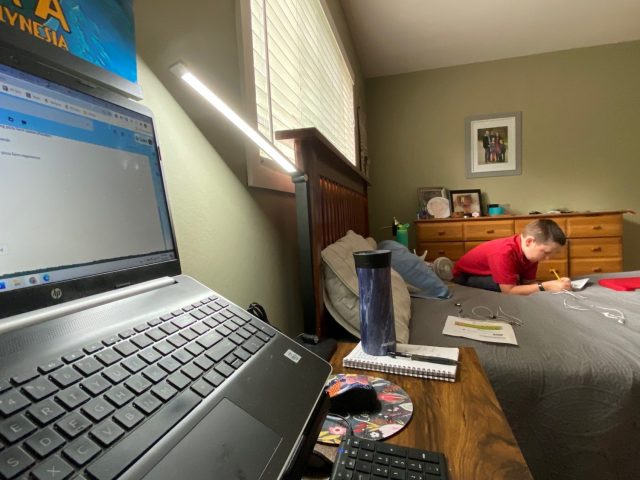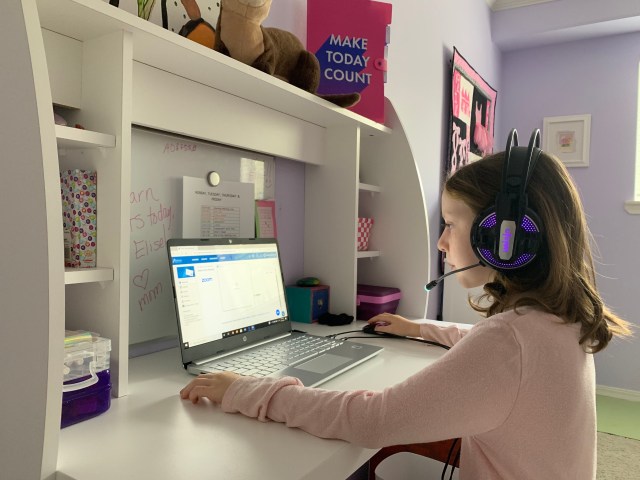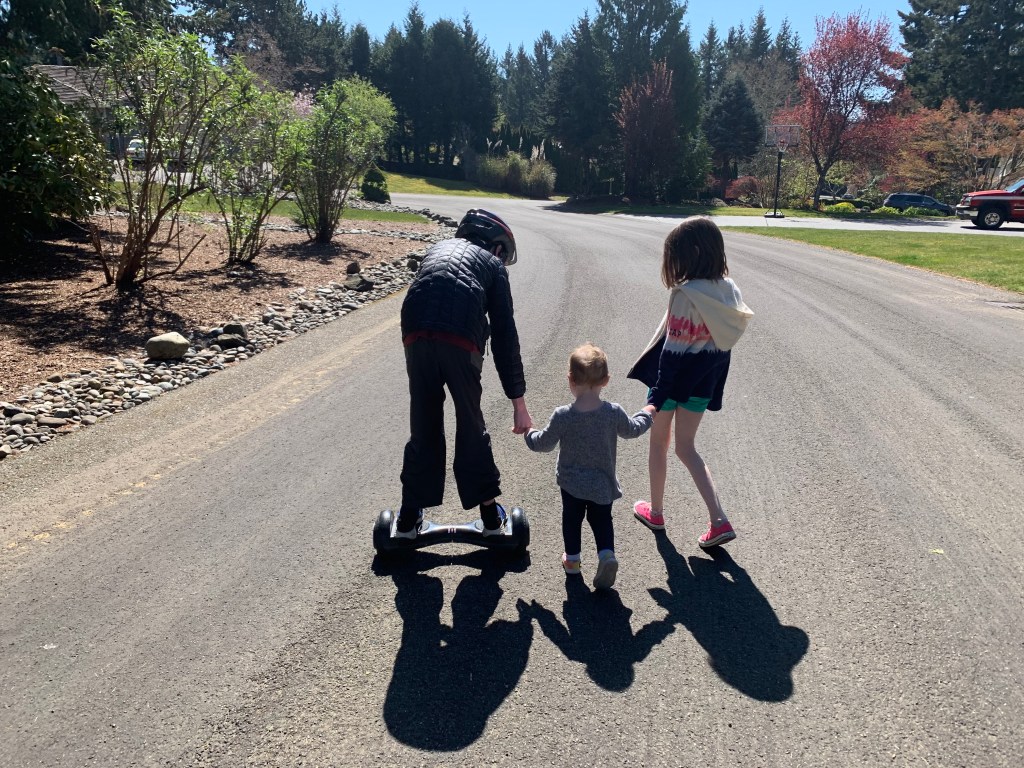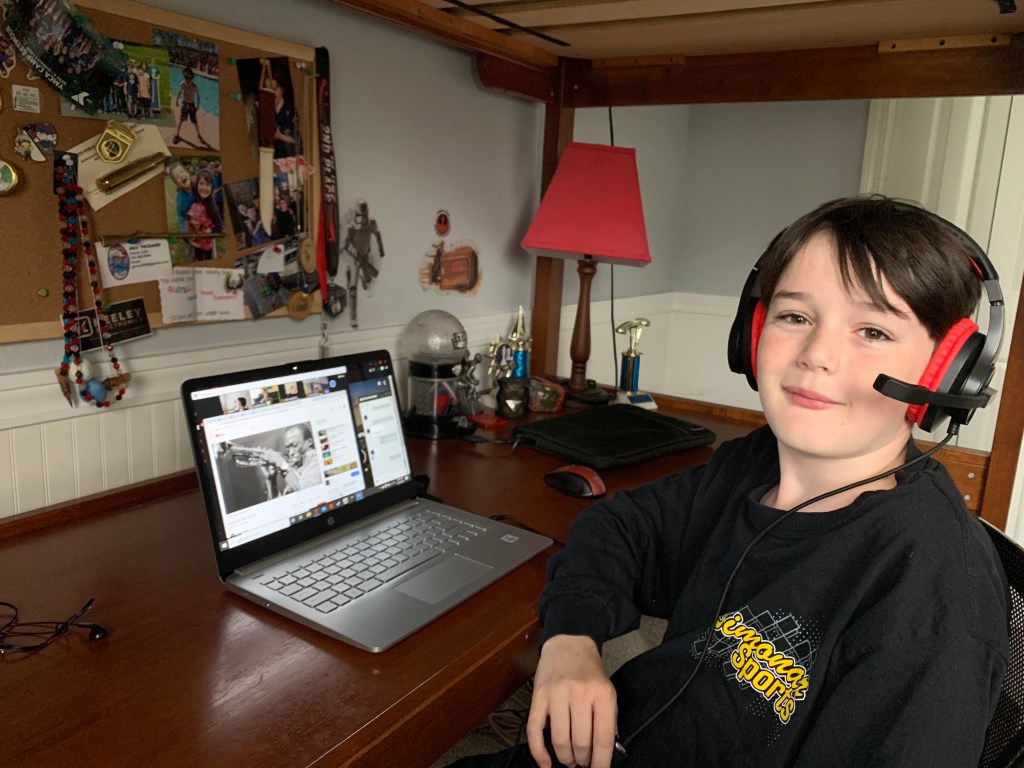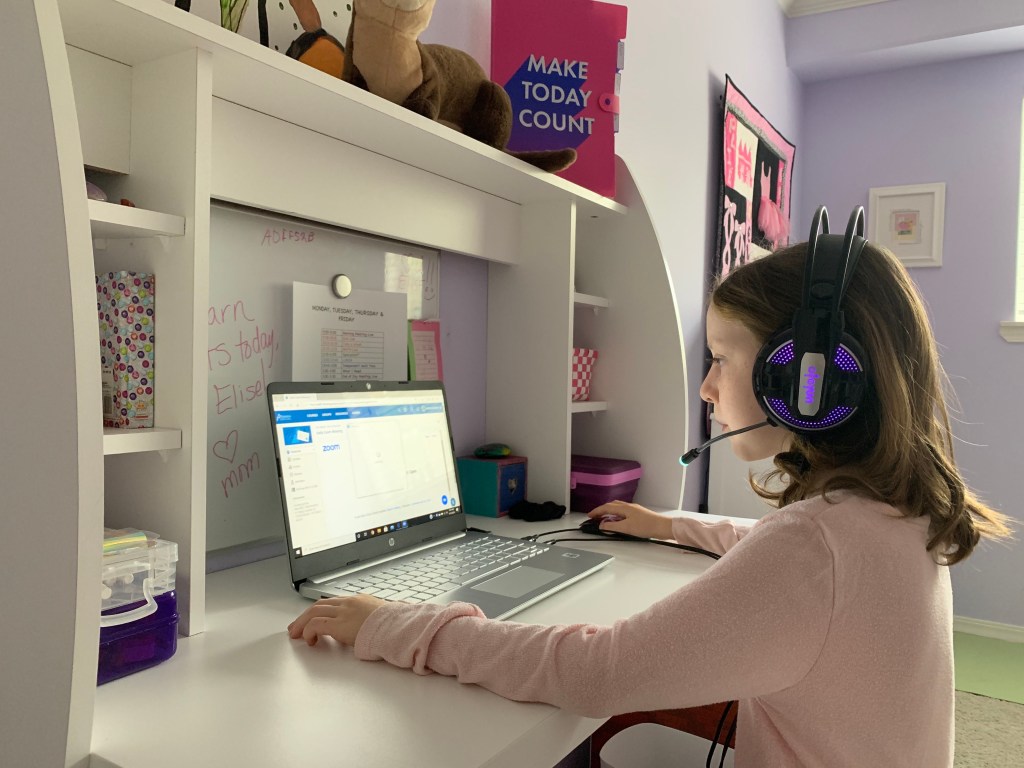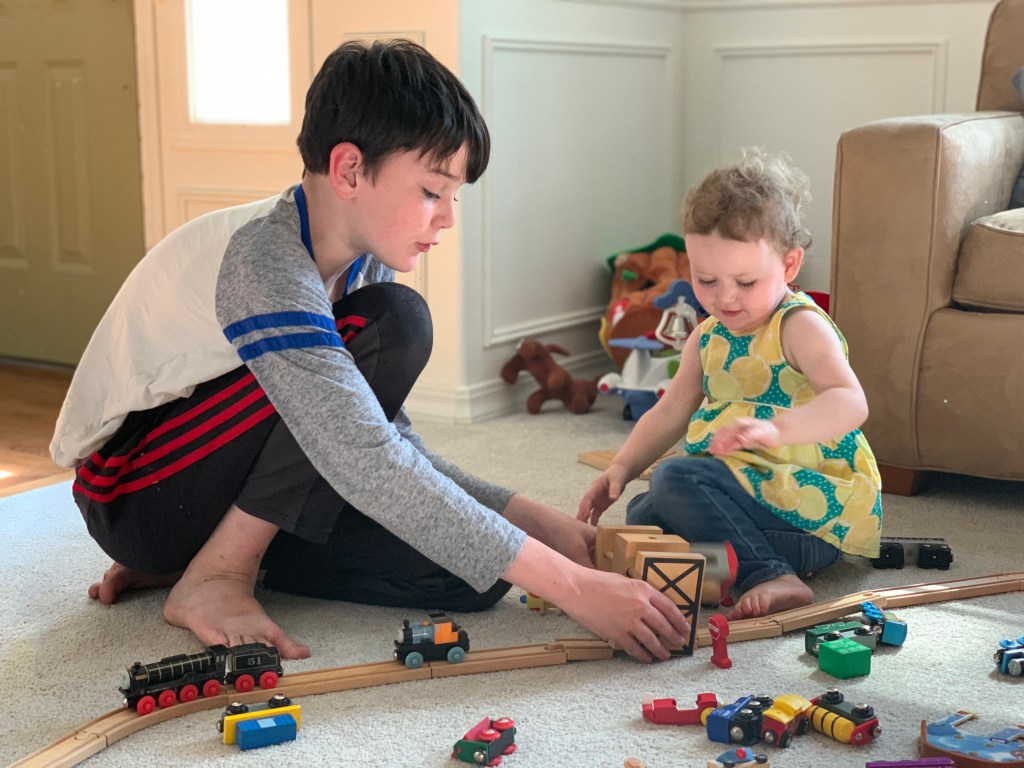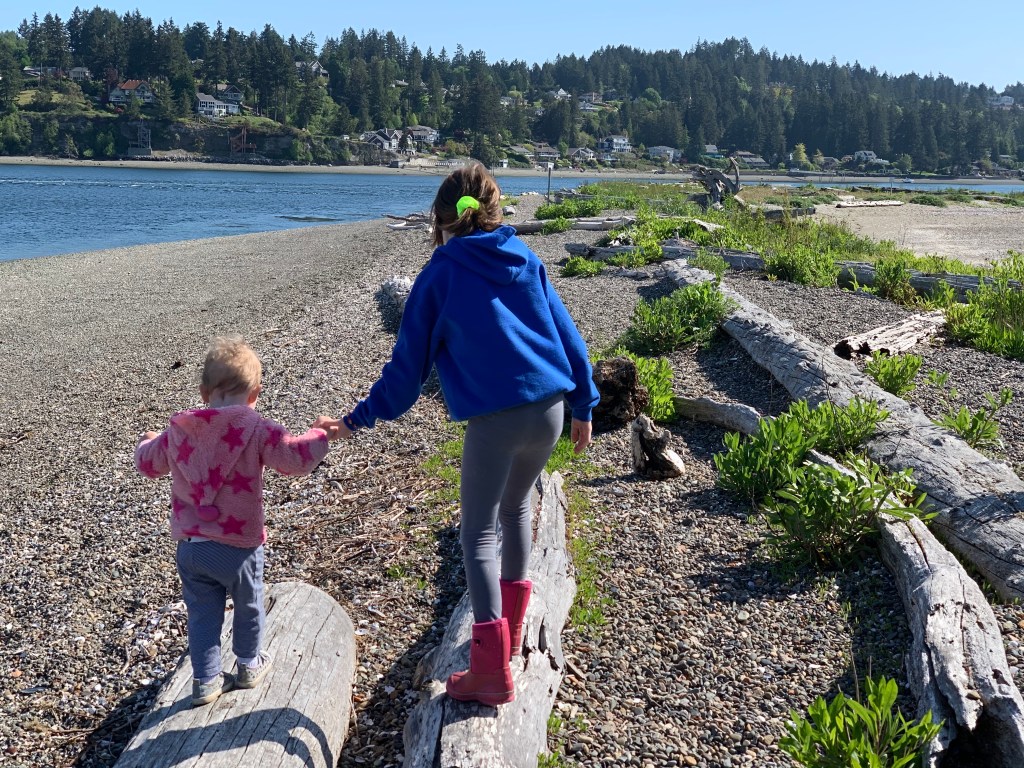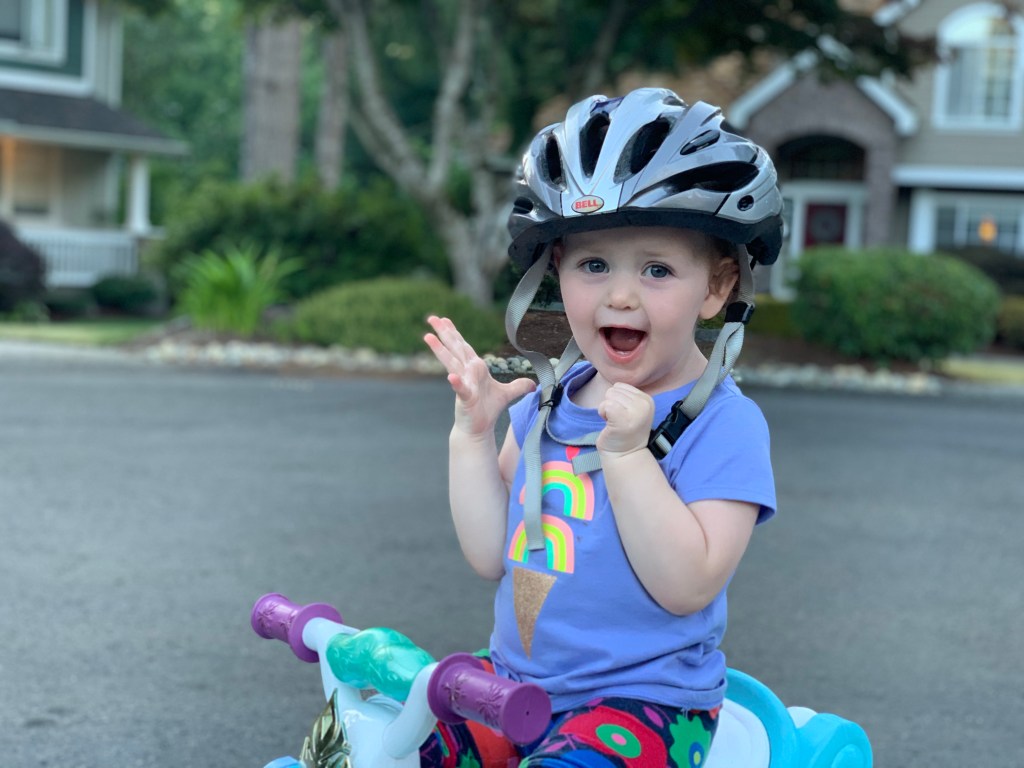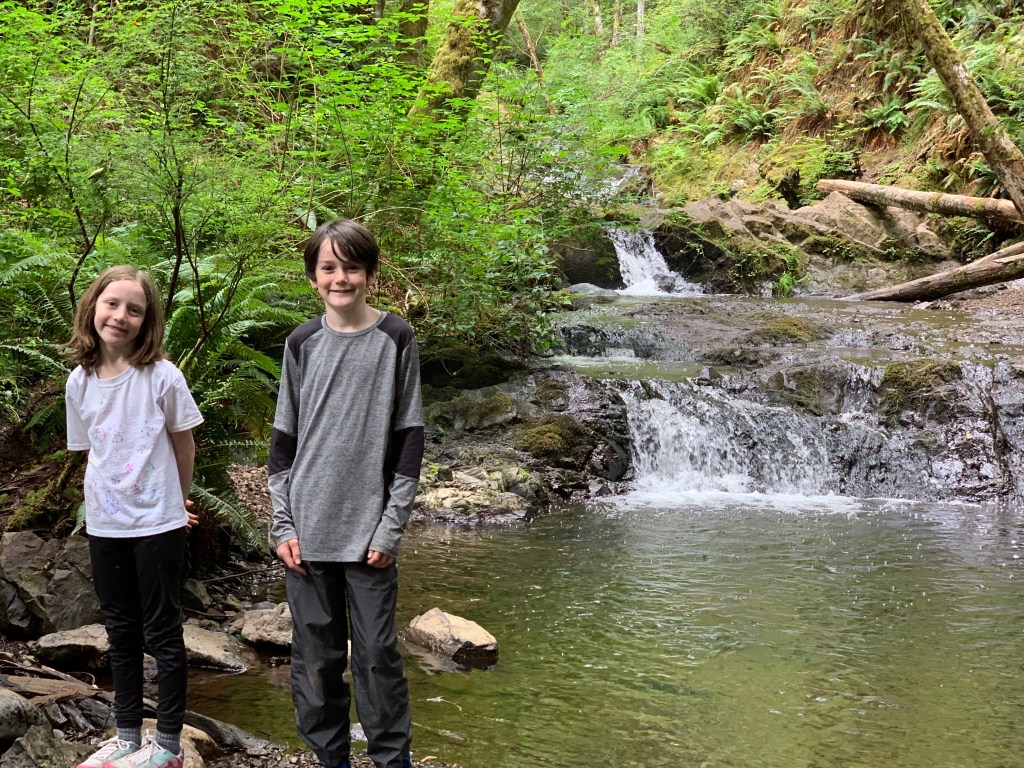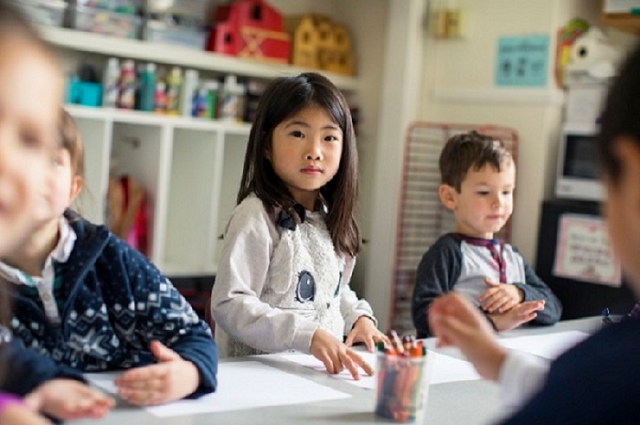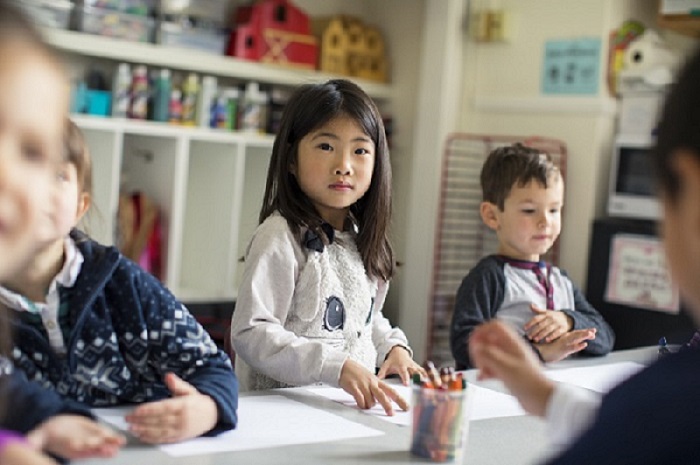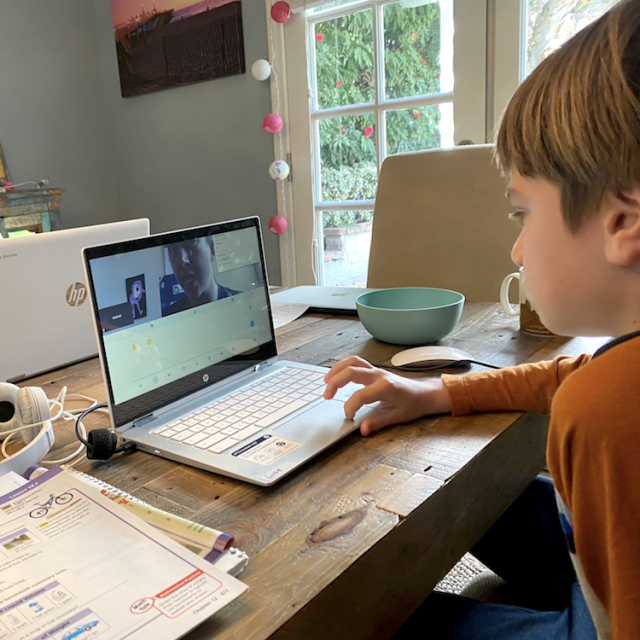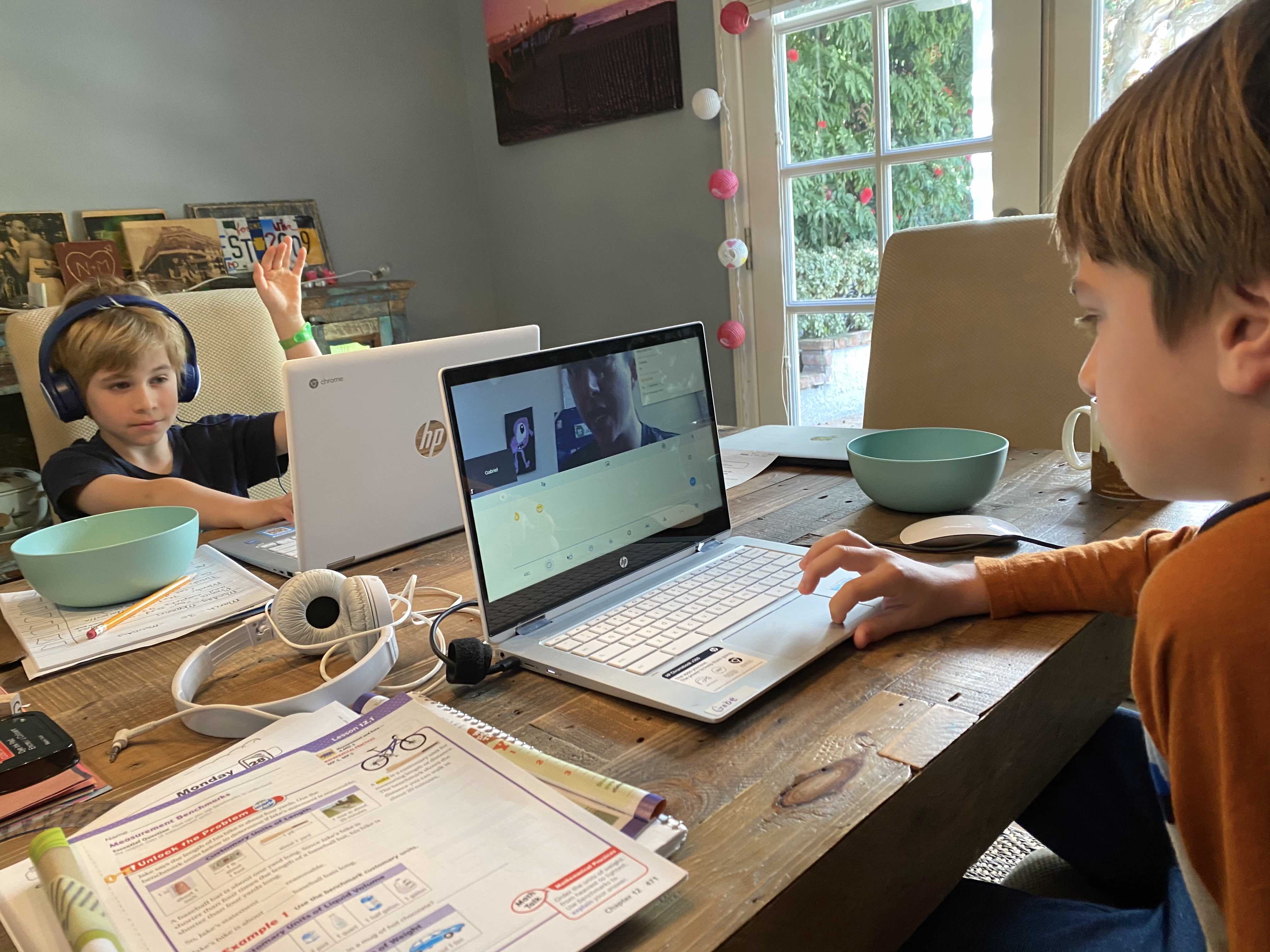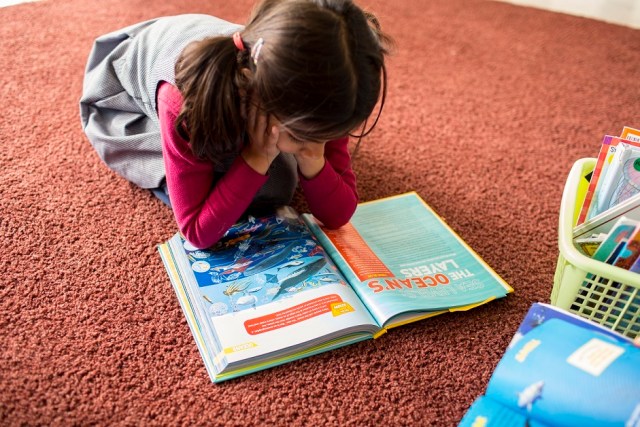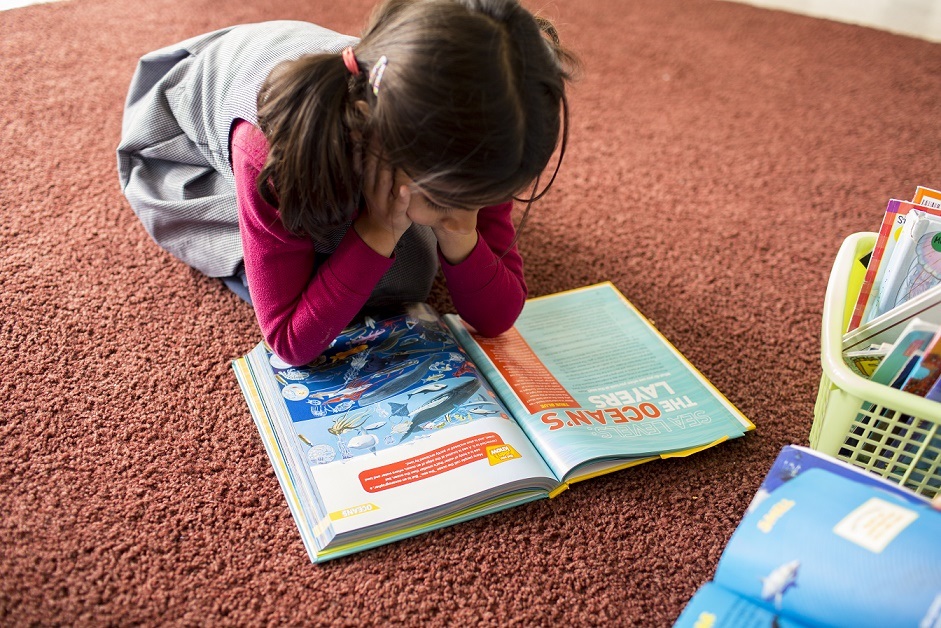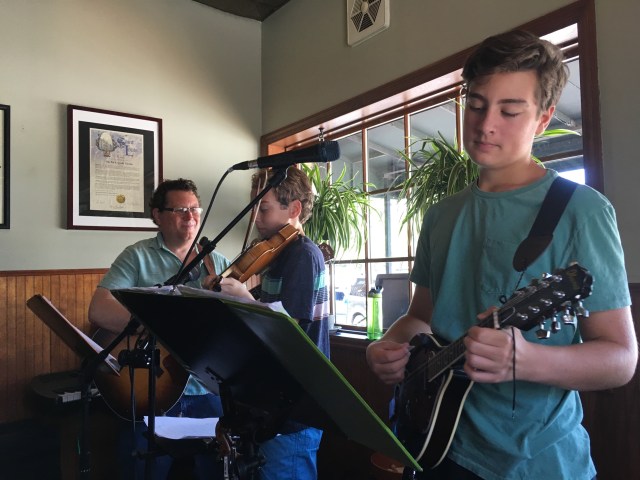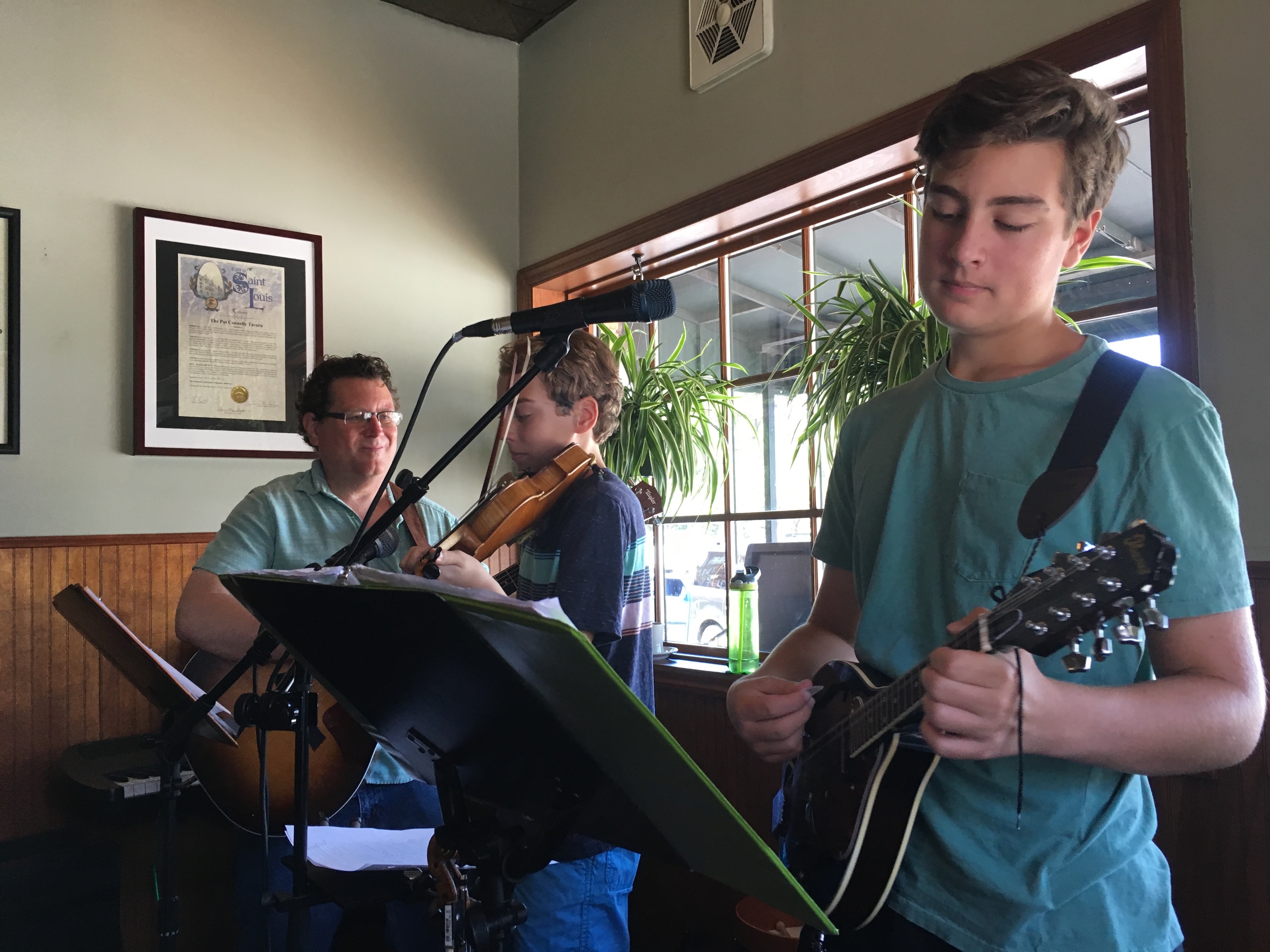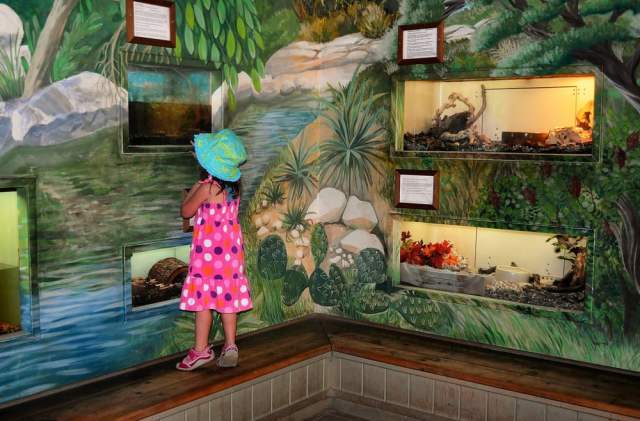Our series, Family Tales, is an honest peek into the daily lives of families across the country who are on this crazy ride we call parenthood! From divulging childcare costs to breaking down family finances to managing a virtual school year with multiple kids, we tap into the Red Tricycle army of parents to find out how they’re making it work. This series is a judgment-free zone.
Interested in telling your story? Start by filling out our questionnaire here. All stories are anonymous.
I’m Surprised How Well My Family Has Adapted to Distance Learning. Here’s Why We Prefer It.
Name and occupation: Kate Loweth, Bay Area Editor & Content and Calendar Manager at Red Tricycle
My partner’s occupation: attorney
City: Campbell, CA
Grades my kids are in: daughter in 7th, son in 6th and son in 4th. They all go to the same private school.
School set-up in 2020: Our school started everyone with distance learning as our county is still on the COVID watch list. Our family will be doing distance learning at least through the first trimester even if the school is approved for in-person learning. When in-person learning is approved for our school, the middle schoolers would go two days a week, home for three, and the elementary school kids would be there full time. We just felt that having three kids on two different schedules (plus the in-school mask-wearing and COVID precautions) made the distance learning option better for our family.
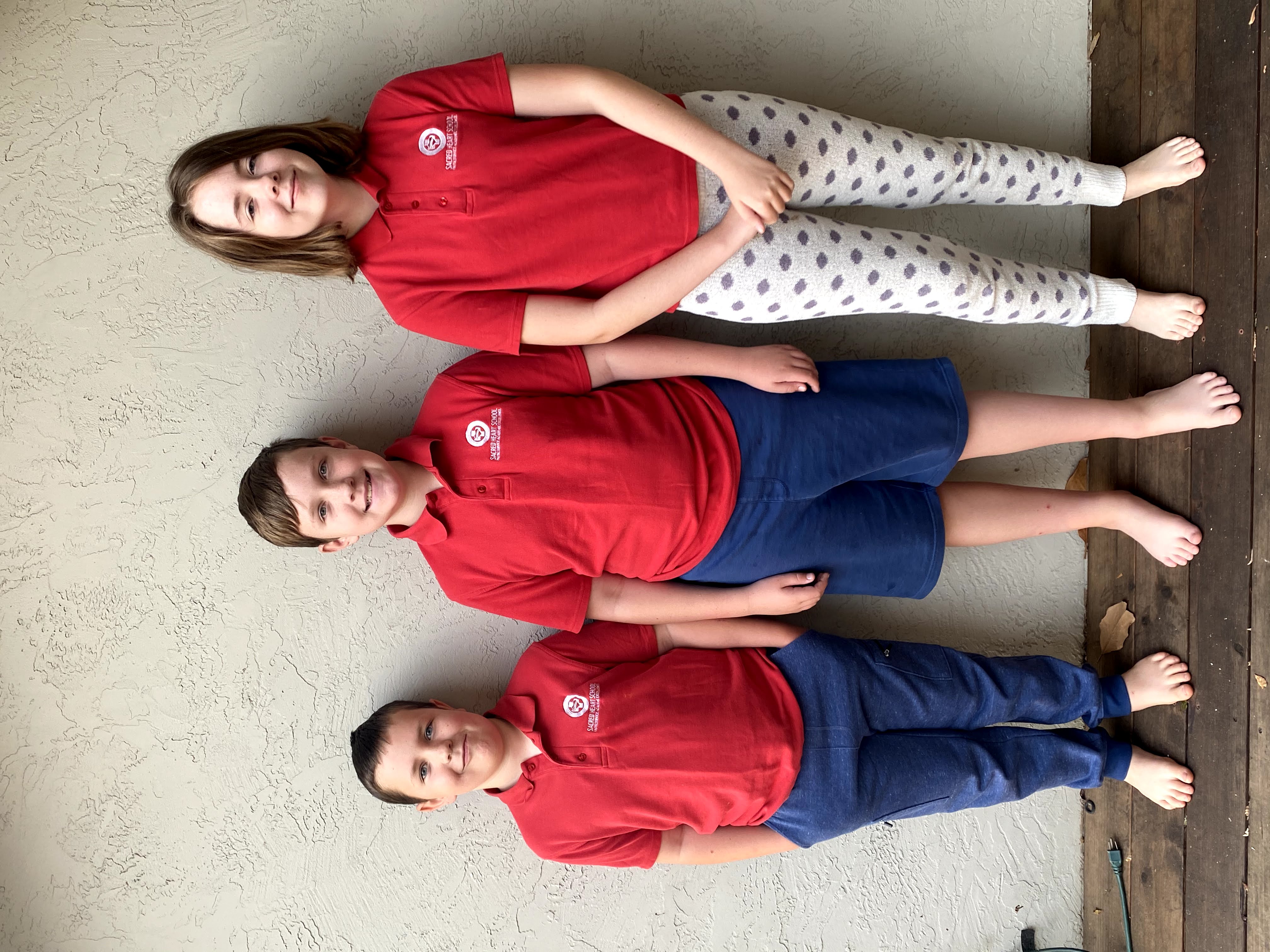
Well, the 2020-2021 school year is underway without the usual fanfare. I didn’t get my annual excited-mom-dropping-kids-off-on-the-first-day photo this year because there was no drop off. Thanks, COVID. We’re back to distance learning again and I’ve definitely learned a lot from last year. Honestly, distance learning wasn’t that bad for us last school year so I didn’t dread it like many parents do. Yes, I consider myself very lucky in that regard. Our school did a great job pulling everything together quickly and with older kids I don’t have to spend my days teaching and entertaining them while also trying to hold down my full-time job. Yes, again I know I’m lucky that my kids are older and more self-sufficient.
My three kids are in fourth grade (elementary school), sixth and seventh grades (middle school) and this is how our days typically play out (unless we lose power because, California).
Morning: My husband does the morning routine & I’m more than fine with it
Alarm goes off at 6:15 a.m. and I shut it off while my husband gets up to make coffee (yay!) and shower. Most likely our two boys are already up as they’ve always been early risers. My seventh grader is almost 13 and she can sleep until noon if we don’t wake her. Middle son makes himself breakfast (almost always involving Nutella) while the youngest watches a show on his Kindle Fire.
My husband usually makes breakfast for the youngest as we try and get as much protein as possible into him in the morning (to help with focus) or he will make one of these Just Crack an Egg cups for himself. We wake up the oldest around 7:15 a.m. and I usually get up then as well, after checking my email from my bed. Coffee for me, breakfast for my daughter and during this time my husband usually heads off to work after loading the breakfast dishes in the dish washer.
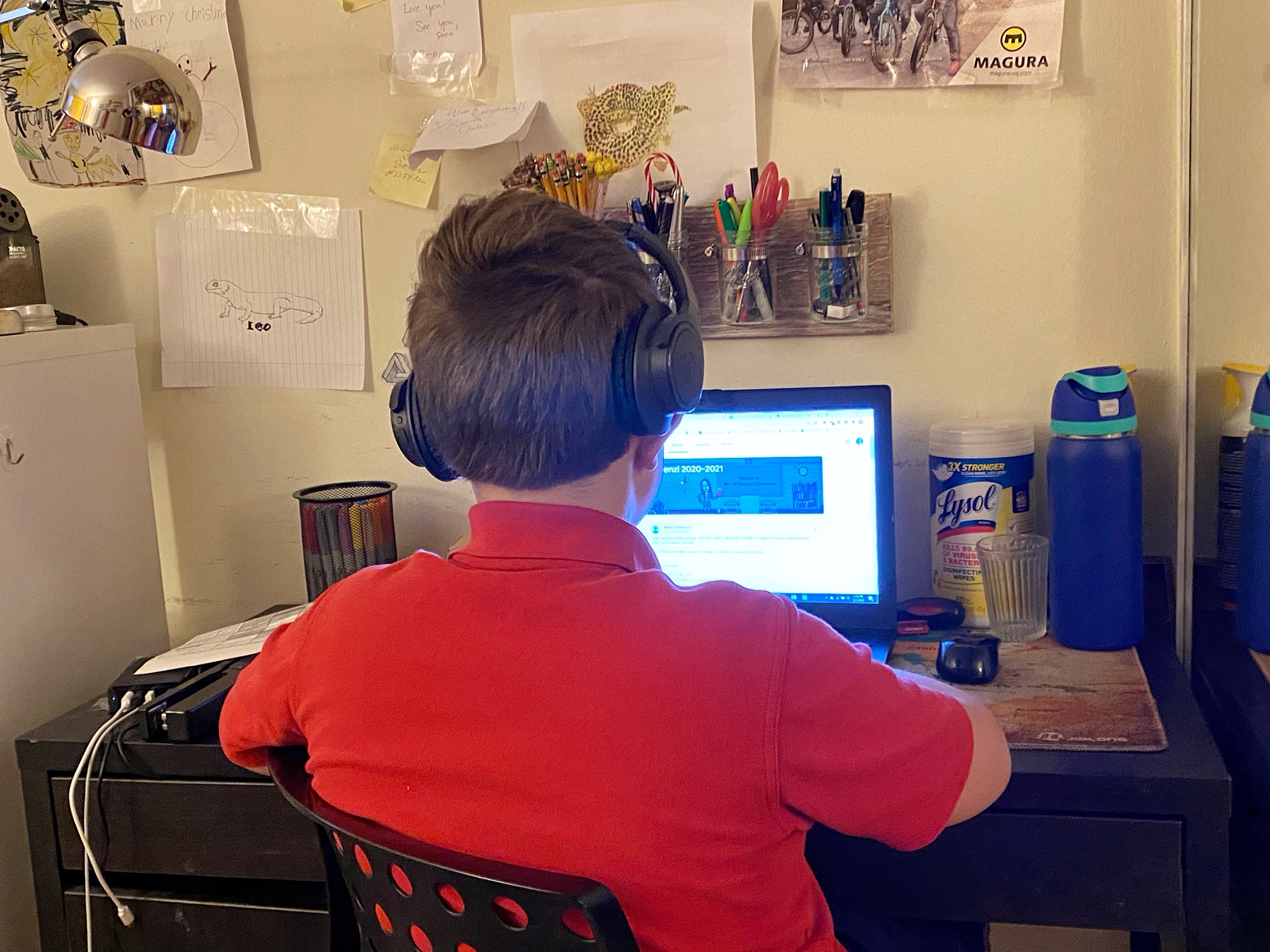
Morning School & Work: Everyone’s in their own room & we stick to our rigid schedules
Kids need to be online at 8 a.m. This school year they have to wear their uniform shirts any time they have a class meeting (they go to a private school). This means we usually have a lovely combo of fleece PJ pants with that red polo shirt but it’s better than constantly asking them to change out of their jammies like last year.
We live in a tiny-ish rental house in the Bay Area and just before COVID hit we swapped the kids’ rooms so that the boys were no longer sharing. I gave up my home office (which was becoming just a dumping ground anyway) and now each kids has his/her own room. This has worked out well for us with everyone doing distance learning as they can be on group class meetings without bothering each other.
We got desks for the kids (this one for the youngest and two hand-me-downs for the other two) and shelves/bins to organize their school gear. The school sent home iPads for each student in grades 2-8 which is great. My daughter uses hers with a Bluetooth keyboard and the boys have old laptops of mine that they prefer (bigger screen). My daughter will be getting a new laptop for her upcoming birthday. The older two use headphones with mics for their meetings. The youngest doesn’t like to wear headphones all the time so he skips them. Over the summer I had my kids learn to type using Type to Learn. While they are anything but proficient, it definitely put them in a better place to start this school year.
The older two are totally on their own for the school day. I only have to provide technical assistance on occasion or help them to find the colored pencils or notebook that they need.
The school day is set up by period. Using Google Classroom they are able to log into their classes throughout the day. The distance learning school day goes until 1:30 p.m. for the middle schoolers with recess and lunch breaks. They all have independent work time until 2:45 p.m. when they meet back up with their classes for check out. They’ve continued all the same classes they would have had in-person including PE and Art. I can always tell when one kid has PE as the jumping jacks shake the house!
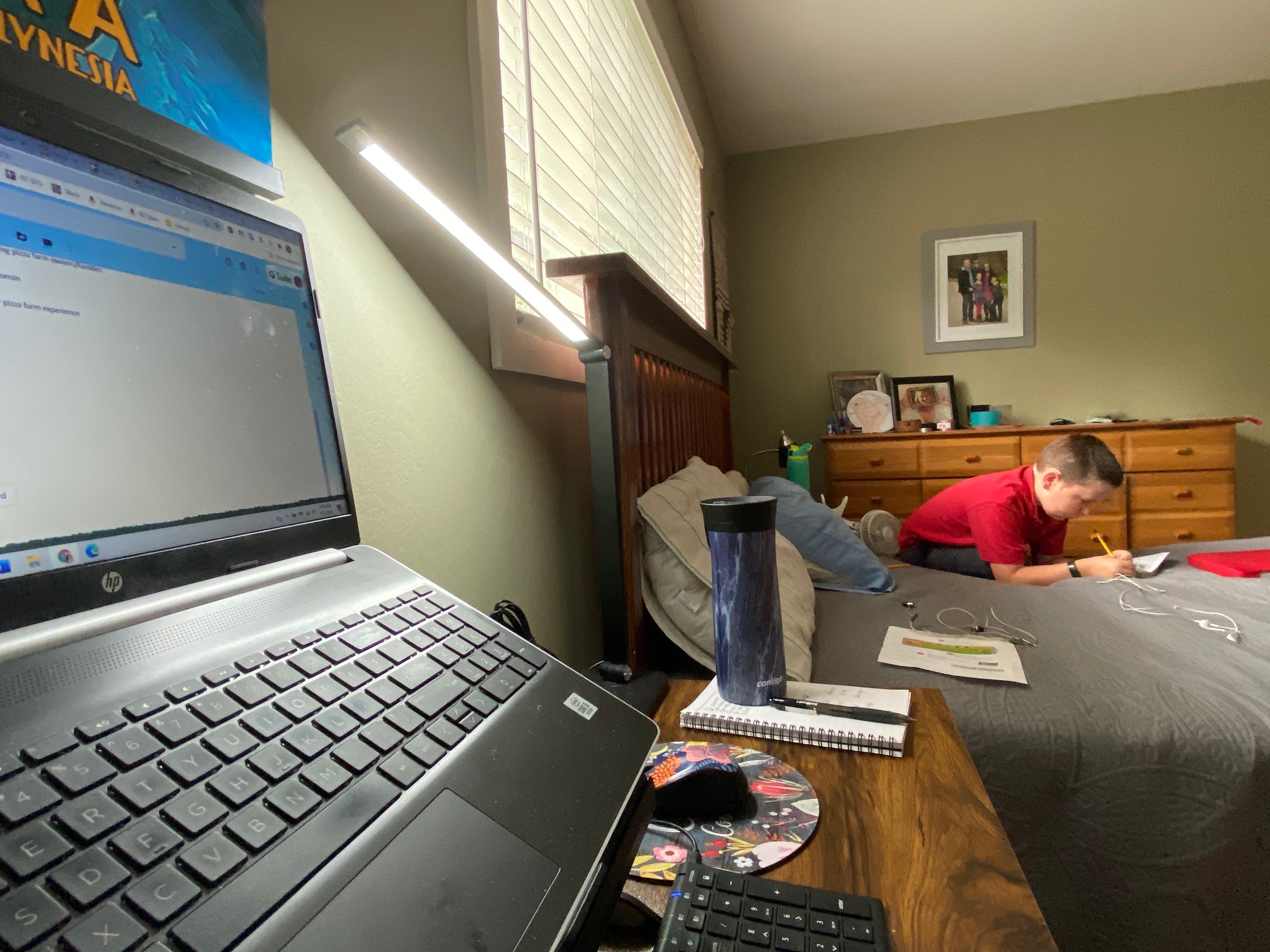
Mid-morning: I love seeing my youngest son thrive with distance learning. I feel a huge sense of relief
For my youngest, he needs a little more help and direction throughout the school day. He’s in fourth grade and has some learning differences that make focus a struggle for him. We’ve actually felt that distance learning has worked well for him because he doesn’t have the distractions from other kids like he did in the classroom. He finds that the Google Classroom learning is great as he can set his screen to only show the speaker (usually the teacher) and that way he isn’t bothered by what other kids are doing. When he was doing in-person learning, he had a hard time with other kids intruding on his space. He also felt a lot of pressure to get his work completed quickly when others were done. Because his brain works differently, it often takes him longer to get to the answer and he felt a lot of pressure when in the classroom. At home he can work at his own pace.
The distance learning schedule has him in classes until lunchtime but usually it’s just a short class meeting (15 minutes or so) where the teacher teaches the lesson and then the class (about 20 kids) has time to work on an assignment on their own before the class meets up again. I have his weekly class schedule posted in my office (a.k.a. my bedroom) as well as his bedroom so that I can keep him on track throughout the day. For the elementary school kids, the distance learning schedule is set up with 30-minute blocks for each class, and two 15-minute recess breaks. They are done for the day at 12:15 p.m. and then meet back up again at 2:45 p.m. to correct the work they’ve done during the interim independent work time. He’s mostly able to do the work on his own, but he does like to come into my “office” to work alongside me sometime (as pictured above).
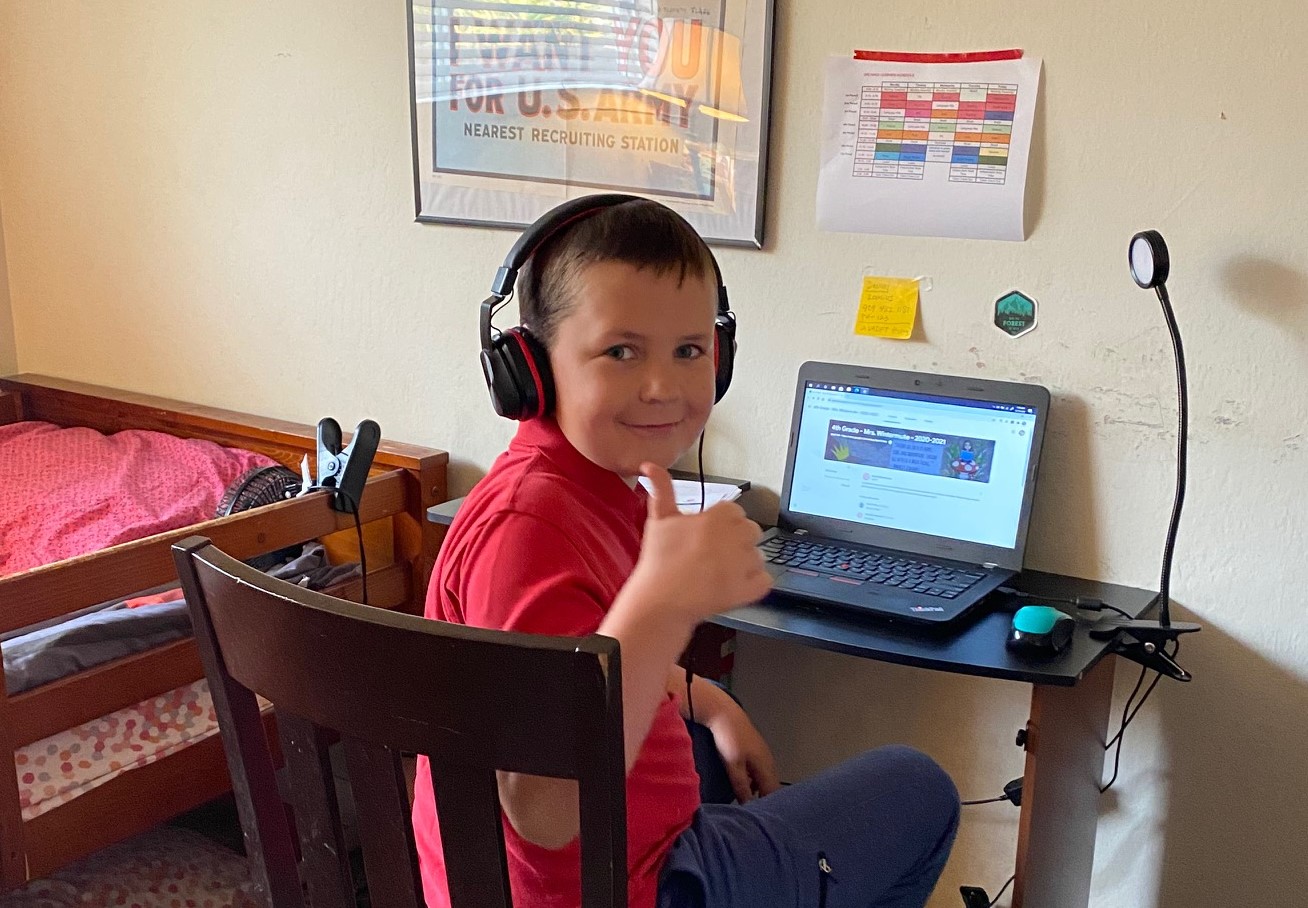
One thing that has helped us tremendously is that he has a FitBit that we charge every night. He uses this to keep on schedule. When he’s excused from a class he will set the FitBit to alert him just before he has to be back online. It has totally helped us and I am not constantly screaming at him to get back online.
Mid-morning: I lock myself in my bedroom (aka the office) to try and work
While the kids are in school, I’m working from home. We had to bump up our internet service when COVID kicked into gear (at an extra $40/month) because it just couldn’t handle three kids plus me home all day on google meets and Zoom meetings. I have always worked from home full time which definitely meant something different six months ago (hello, new office mates)!
Before distance learning began, I was pretty much working from different spots in the house like the kitchen, TV room and my bed (ugh, it’s true). But when the kids came home I really needed to be in a room with a door. With a small house the only option was our bedroom. Even though it’s only about 12 x 12, I swapped out my husband’s nightstand for this desk (that I love) and that’s where I work. I think this helps my kids to see that I am actually working (and not just watching reality TV on my phone) since it’s more of an official work space.
I keep my door closed (“close the door!” is shouted at least a dozen times a day when people come in to ask a question. Can someone please invent a button I can push to close the door from across the room? I would love you forever). We have a HEPA air filter running outside the door that provides a nice white noise and also helps with the poor air quality we’ve been having due to nearby wildfires. If I’m in a meeting and don’t want to be disturbed, I’ll put an “IN A MEETING” post-it on my door and lock the door. Locking the door is KEY because apparently my kids cannot read.
For the most part this arrangement works for me. I do have quite a few video meetings throughout the day (why, why do they have to be on video??) but since my job is in the parenting sphere and almost everyone I work with is a mom with kids at home, they get it if kids come in during a meeting. If there’s something that I really need to focus on, I usually tackle it when the school day is over as I’m more likely to have fewer interruptions then.
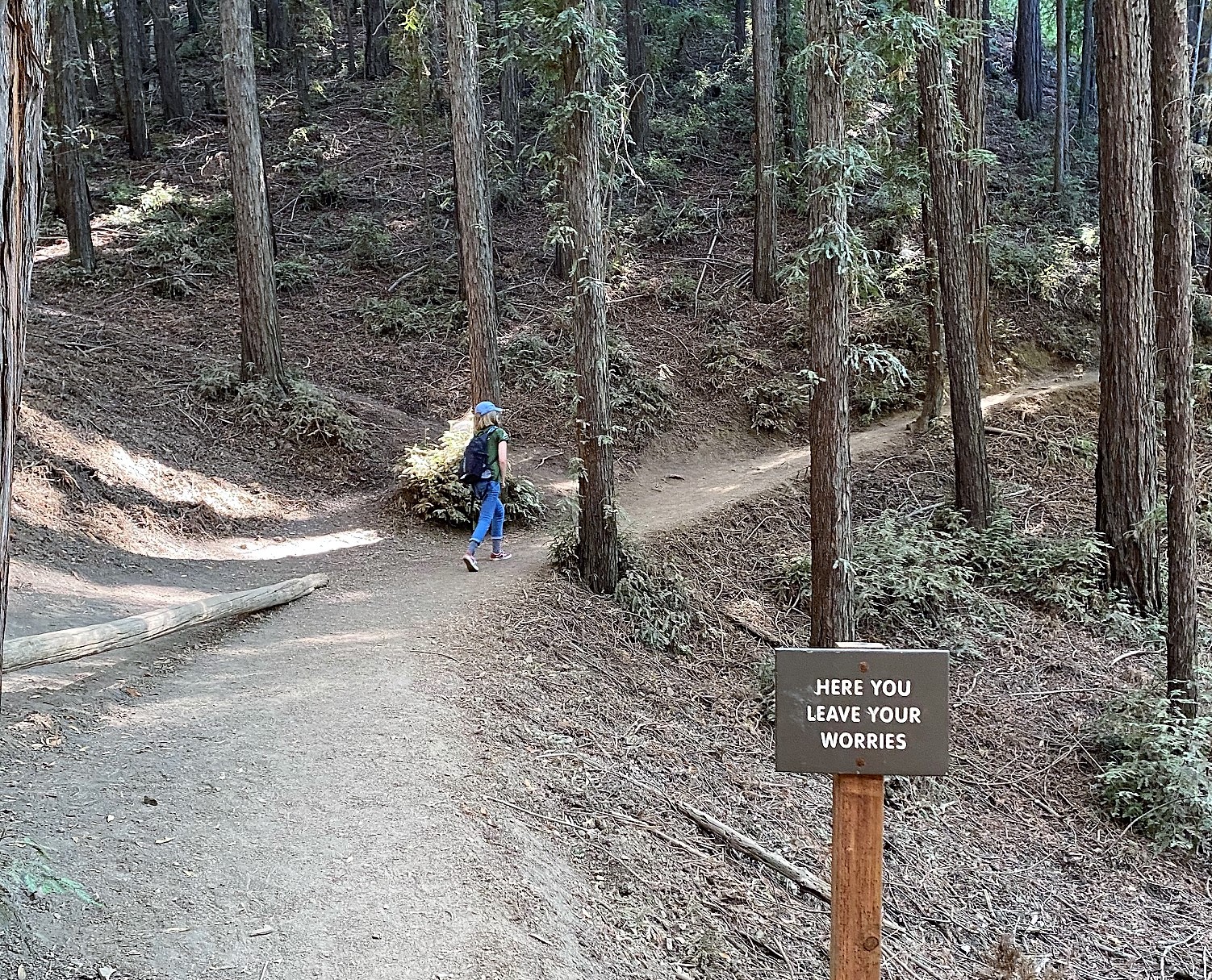
Afternoon: It’s independent work time for all of us
Lunch is usually DIY unless I have a frozen pizza or mini tacos that I can throw in the oven. My middle son can eat the microwavable mac n’ cheese cups every day of the week but I do require a fruit (it’s almost always a banana). The other two kids prefer more of a charcuterie-style lunch with salami, almonds, Wheat Thins and strawberries taking center stage. They all have lunch around the same time but the middle schoolers have to go back to class after lunch as they have a longer school day.
The afternoon is independent work time for all the kids (starting at 1:00 p.m. for elementary schooler and 1:30 p.m. for the middle schoolers) and then the classes reconvene at 2:45 p.m. to check the day’s work and sign off for the day. Usually my youngest still has some work to do after the official school day ends so I either carve out some time during my work day to sit with him and help, or I save it for when my husband comes home from work and he does it.
If my work schedule allows, we try and get out for a late afternoon hike. Luckily where we live is super close to lots of options for getting close to nature.
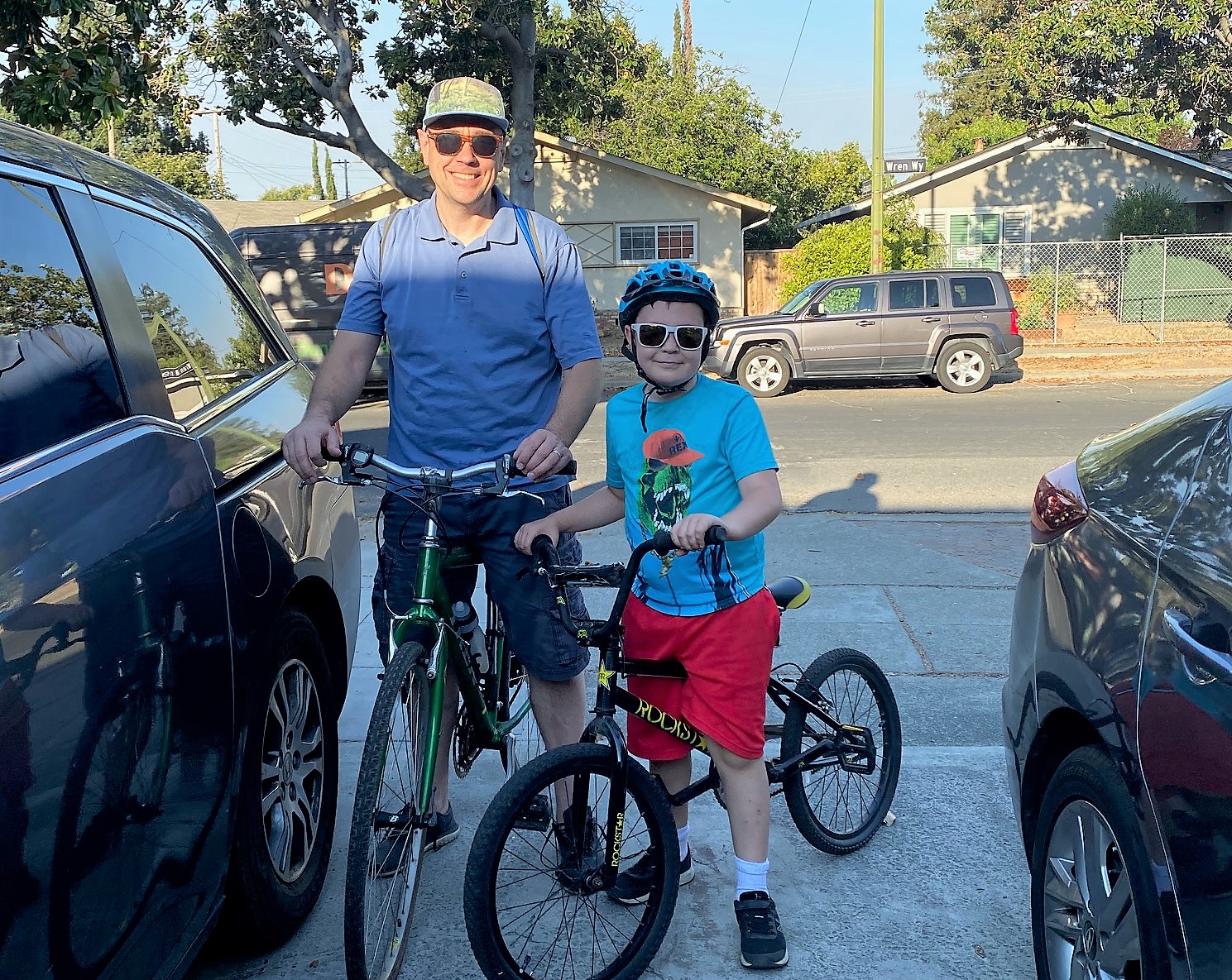
The Evening Hours: We’re now a family that eats at 5:30 p.m. and I’m okay with that
TBH, everyone’s kind of on their own in the evening. I’m not great about restricting devices after the school day so often you’ll see one of the kids out in the backyard hanging out on my favorite pandemic purchase, the backyard hammock. I eat dinner with my kids at the early bird hour of 5:30 p.m. (the natives get hungry so I’ve given in to this early dinner time). My husband is home by 6:30 p.m. and eats on his own. If the kids are up to it, sometimes there’s a bike ride around the neighborhood.
I’m able to look at all my kids’ work online to make sure they’ve turned everything in for the week. I am pretty hands-off with the middle schoolers but I do like to check in to make sure they aren’t having any issues. They turn in assigned work to the teachers by uploading photos of the work to Google Classroom or by using shared docs and sometimes there are tech issues when submitting docs.

Not every day is sunshine and roses: Here’s what’s made it all easier
I’ve definitely turned to outsourcing grocery shopping a lot more during this time at home. While I used to go to the grocery store almost every day to pick up this or that on my way to school pickup, I’ve gotten a lot more organized about groceries. I’ve been ordering fruits and veggies from Daylight Foods, a local restaurant and school food delivery service that pivoted to offer home deliveries when their other business dried up. I hope this service never goes away because their produce is the best. I’ve also been using Amazon Fresh a lot more lately since same-day delivery is always available.
When the week looks like it’s going to be a little more crazy than usual, I’ll order some meals from Good Eggs or Sun Basket.
While distance learning does have some additional challenges, we’ve been able to make it work for our family for the most part. We are all just doing our best to cope with the situation as it is!
Interested in telling your story? Start by filling out our questionnaire here. All stories are anonymous.
—story and photos by Kate Loweth
RELATED STORIES
The Bay Area’s Best CSA Farm Boxes and Produce Delivery
